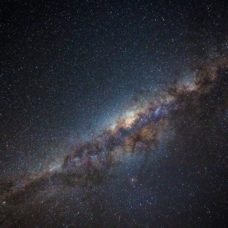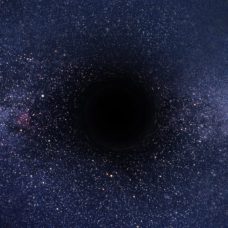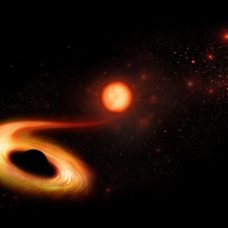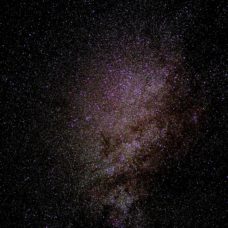Over the centuries, solar eclipses have greatly influenced both sciences and beliefs. We revisit the top 10 solar eclipses throughout history.
Due to their spectacular aspect, eclipses have been assiduously observed since ancient times.

Long regarded as divine manifestations, they aroused fascination and instilled fear in earlier civilizations. In a distant past, solar, and lunar, eclipses have been long associated with ominous supernatural entities threatening to extinguish the light of the Sun or the Moon.
The top 10 solar eclipses have changed science.Click To TweetOnce dreaded, solar eclipses are nowadays awaited by professional and amateur astronomers alike.
Their awe-inspiring show aside, total solar eclipses offer a privileged opportunity for the study of some celestial phenomena that scientists have yet to fully understand, such as the solar faint corona, the sun’s upper atmosphere, and the lunar orbit. Modern digital models enable early predictions of eclipse events with split-second timing.
In chronological order, here are the Top 10 Solar Eclipses that spurred scientific advancement:
10. Anyang Eclipse, 1302 B.C.E.
The Anyang eclipse occurred in Central China, on June 5, 1302 B.C.E. A script, etched on a fragment of tortoise shell, speaks of “three flames” eating the sun, later interpreted by scientists to be streamers of gas in the solar corona.
Based on the Anyang date and observations, NASA’s Jet Propulsion Laboratory found that, due to tidal friction, the Earth has slowed its rotation by 0.0047 seconds since 1302 B.C.E.
9. Ugarit Eclipse, 1223 B.C.E.
Instead of 1375 B.C.E as previously thought, Ugarit total solar eclipse occurred on March 5, 1223 B.C.E in the Assyrian Empire, in the area nowadays known as Syria.
The Ugarit tablet describes how Mars and the stars showed in a dark sky and in the presence of a faint sun.
8. Thales’ Eclipse, 585 B.C.E.
Herodotus, the Greek philosopher, historian, and astronomer, claimed that Thales of Miletus had predicted a solar eclipse event in the 6th century B.C.E
Scientific calculations, Herodotus claimed, predicted the event. If accurate, it was to be an annular solar eclipse that would have occurred over the Middle East on May 28, 585 B.C.E, which would make Thales prediction the first of its kind.
7. Anaxagoras’ Eclipse, 478 B.C.E.
Philosopher Anaxagoras of Clazomenae (500-428 B.C.E) might be the first to realize that a solar eclipse is nothing but the moon blocking the light of the sun.
Experts think he might have used accounts of Greek sailors and fishermen around 478 B.C.E, who had seen solar eclipses. He used this information to figure out that the Moon casts on earth a moving shadow that’s limited in scope.
6. Hipparchus’ Eclipse, 189 B.C.E.
Astronomer Hipparchus of Nicaea described some 20 eclipses during his lifetime. But historians think that one solar eclipse in particular, one that occurred on March 14th, 189 B.C.E, led him to calculate the first estimation of the moon’s distance from earth.
According to Hipparchus, 268,000 miles separate the moon from earth. This is not far off from the 238,900 miles obtained by modern calculations.
5. Halley’s Eclipse, 1715 A.C.E.
Edmund Halley, the English astronomer, didn’t only discover the eponymous famous comet. Halley published what would go down as the first scientific prediction for a solar eclipse, that of May 3rd, 1705, which was visible over most of England.
Halley also published a map predicting the eclipse’s trajectory. His calculations were off by only 4 minutes in time and 18 miles in distance.
4. Scotland, 1836
Halley’s 1705 observations are also the first record of the bright dots that appear at the beginning and end of a total solar eclipse, which he attributed to irregularities in the moon’s surface.
These bright dots will be known as “Baily’s Beads” in reference to astronomer Francis Baily who first described them during the solar eclipse over Scotland in 1836.
3. Northern Europe, 1851
On July 28th, 1851, a total solar eclipse cast a shadow over Northern Europe and led to many breakthroughs at the time.
Studied by many scientific expeditions, the 1851 eclipse was the first ever to be caught on a photograph by Julius Berkowski at the Royal Observatory in Konigsberg.
The event also led to the first recorded observations of the chromosphere (the sun’s upper atmosphere), by George Airy, astronomer and member of Britain’s Royal Astronomical Society expedition.
2. India, 1868
Jules Janssen, a French astronomer, took photos of the sun’s spectrum during a total solar eclipse while in eastern India on August 16, 1868. Janssen’s photos led to the discovery of helium.
Using spectroscopy, Janssen analyzed his pictures and found a bright line in the yellow part of the sun’s spectrum, related to unknown gas.
Based on similar observations, English astronomer Norman Lockyer later named this gas “Helium”
1. Einstein’s Eclipse, 1919
Einstein’s theory of general relativity–which, among other things, points to gravity’s effect on light–owes the first evidence of its validity to a solar eclipse. This makes it our favorite among the top 10 solar eclipses.
In 1919, two British astronomers, Arthur Eddington and Frank Watson Dyson, went on an expedition to observe the total solar eclipse that was visible from Africa and South America.
Eddington and Dyson calculated the exact location of stars in the path of the eclipse, then took photos of these same stars during the event. They found that light can actually be bent as it passes close to the sun, leading to a virtual displacement of stars locations.



















Comments (0)
Least Recent